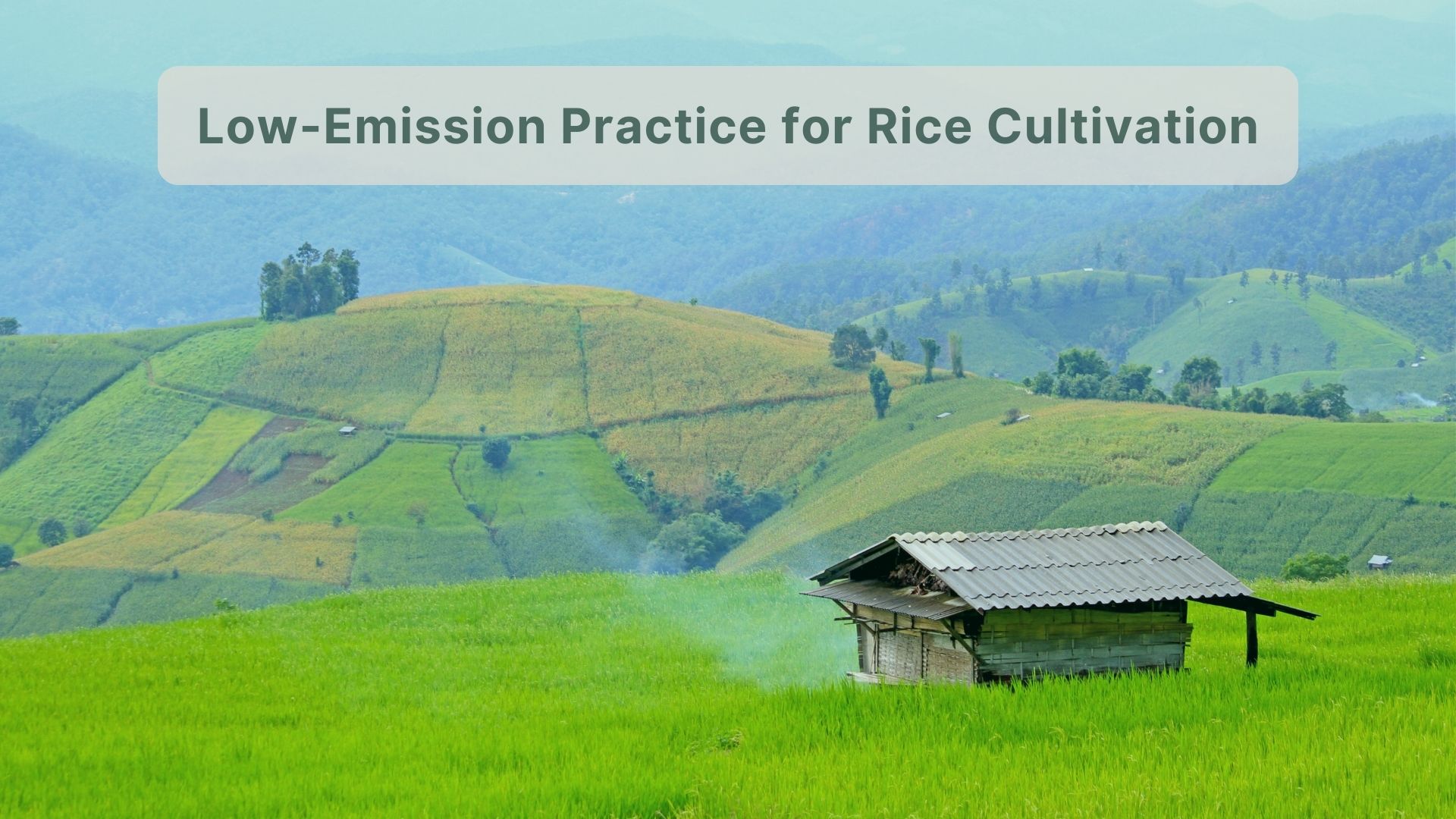Decarbonizing the Agriculture Sector with Alternate Wetting and Drying
Science

In 2021, Indonesia’s agricultural sector contributed 154.16 million metric tons of CO2 equivalent or 2.4% of the global agricultural emissions [1,2]. Rice cultivation accounts for the majority of these emissions, making up 57.88% of domestic agricultural emissions. Rice is the staple food of Indonesia, making the country one of the largest rice consumers; Indonesia’s rice consumption is almost 150 kg per person per year [1]. Indonesia aims to become self-sufficient in rice cultivation and, eventually, a rice exporter. Increased production, non-optimal agricultural techniques, use of diesel fuel for agricultural tools, and use of synthetic fertilizers have resulted in rising greenhouse gas emissions in the last five years. One way to reduce emissions in rice cultivation is the alternate wetting and drying (AWD) method.
What is Alternate Wetting and Drying (AWD)?
In cultivation using AWD method, rice fields get periodically flooded and non-flooded. A ‘field water tube’ - 30-cm long PVC tube with perforations covering half of the tube height - is installed to monitor water level on the field. According to the International Rice Research Institute, AWD is implemented two weeks after rice seedlings are transplanted into a wet field. The field is left to dry until a certain water level is reached, for instance 15 cm below the soil surface; this is measured through the field water tube. Then, the field is re-flooded until water level reaches 3-5 cm above the soil surface. This is done continuously except during the flowering stage when rice paddies are very sensitive to dry conditions.
How Does AWD Help to Reduce Emissions?
Constantly flooded rice fields emit a significant amount of emissions, contributing 20-40 tons of methane (CH4) annually and making up 10-12% of anthropogenic emissions from the agriculture sector. These methane gases are produced from decomposition of organic material by methanogens (methane-producing bacteria) which occurs in anaerobic conditions (in absence of oxygen). Allowing the field to drain leads to the inflow of oxygen into the soil, hence halting the anaerobic process [3]. In contrast, draining the field favours the increase of population and activity of methanotrophs. Methanotrophs are aerobic bacteria that convert methane into carbon dioxide (CO2), a greenhouse gas that is less harmful than methane [4]. The AWD method has been proven to reduce methane emissions by 20-70% [3].
Other Benefits of AWD
Regular draining leads to a reduction in water consumption by up to 30%. As a result, the needs of irrigation is reduced and resiliency to water scarcity is increased. The AWD method does not reduce crop yield compared to the conventional continuous flooding method. Instead, AWD may increase yield by promoting stronger root growth. By lowering irrigation expenses and increasing crop productivity, farmers can obtain a higher net financial return [3].
Keep updated on decarbonization and carbon market topics by visiting our Insights page 🌳
Ask our experts if you want to explore more → https://calendar.google.com/calendar/u/0/appointments/schedules/AcZssZ0p7LzHA2gXhiZY9L3lo0O6kDm0bxEHigYT0tu3eYYXNAfmTR9GWTrLQfTfVYzfiCHzXy_yoeG3
References:
[1] Naik, N. (2023). Indonesia’s Agriculture Sector Contributed 2.4% of Global Agricultural Emissions in 2021. Climate Scorecard. https://www.climatescorecard.org/2023/03/indonesias-agriculture-sector-contributed-2-4-of-global-agricultural-emissions-in-2021/
[2] Siahaan, M. (2024). Greenhouse gas (GHG) emissions from agriculture in Indonesia from 2008 to 2021. Statista. https://www.statista.com/statistics/1226721/indonesia-ghs-emissions-from-agriculture/
[3] International Rice Research Institute. (2024). Alternate Wetting and Drying. GHG Mitigation in Rice. https://ghgmitigation.irri.org/mitigation-technologies/alternate-wetting-and-drying
[4] Ma, K., Conrad, R., & Lu, Y. (2013). Dry/Wet Cycles Change the Activity and Population Dynamics of Methanotrophs in Rice Field Soil. Applied and Environmental Microbiology, 79(16), 4932–4939. https://doi.org/10.1128/aem.00850-13
